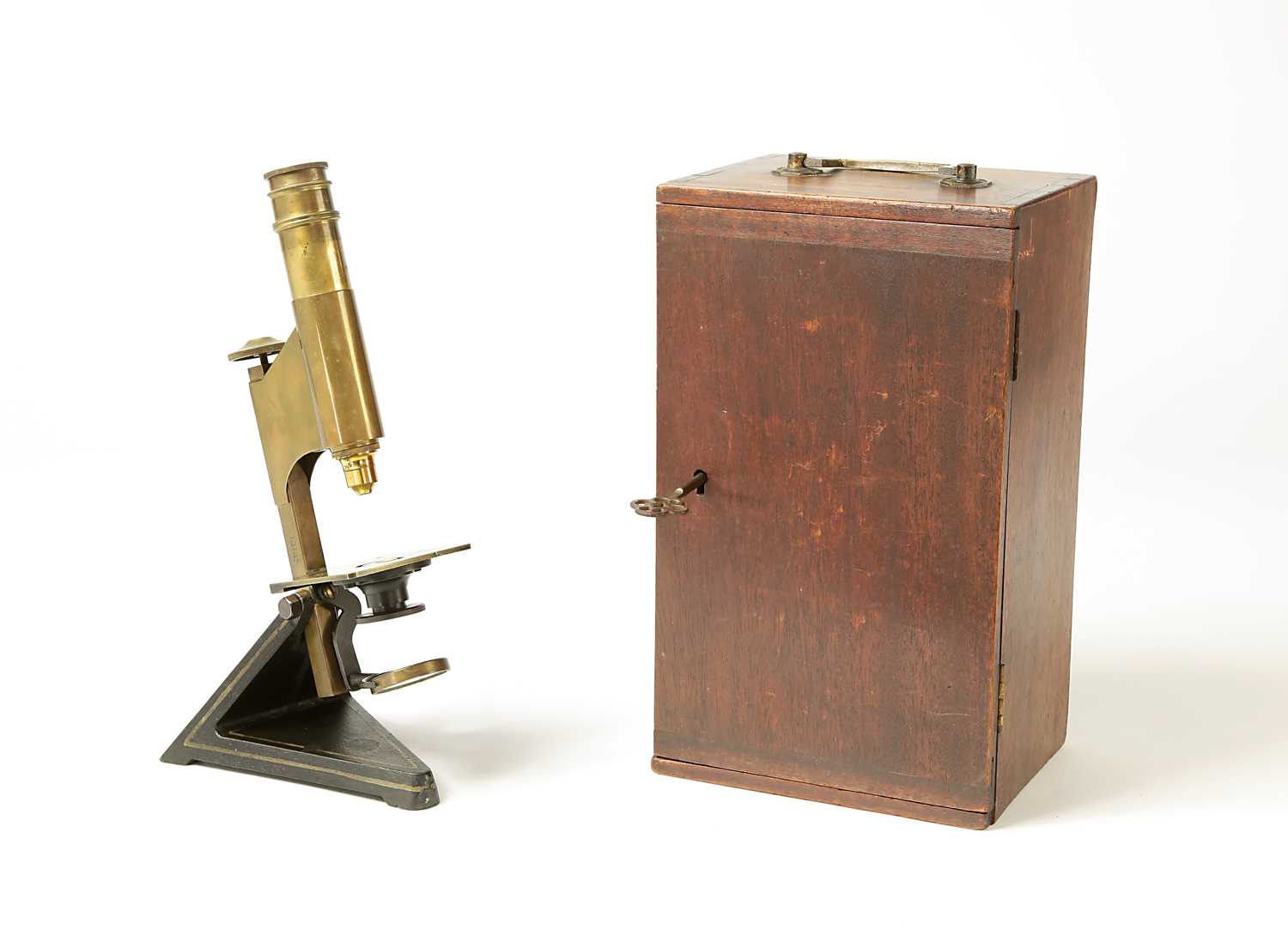1st May, 2000 12:00
Instruments of Science and Technology
74
A Beck 'Star' Compound Monocular Microscope, Ca 1885
A Beck 'Star' Compound Monocular Microscope.
London, England, circa 1885.
Number: 14145.
With simple adjustable aperture beneath the square stage and a plano-concave mirror that rides in a brass pivot. Coarse focus is achieved through a rack and pinion gear mechanism that translates the body upward and downward to bring the specimen into sharp clarity, standing on a heavy triangular base, with associated wooden box with brass handle.
Measurement: H. 30 cm.
catalogue Note: R. & J. Beck introduced the Star microscope in the summer of 1885, explaining that it was designed “to combine thorough efficiency with great economy.” The Star won a gold medal at the International Inventions Exhibition held in London, and Beck’s American agent termed it “the most wonderful cheap instrument ever made.” And yet there was room for improvement. By 1891, having tinkered with the form, the firm announced that “we confidently believe that it is by far the best instrument ever offered at so moderate a price. The leading idea, in designing and constructing the ‘STAR,’ was to produce a microscope in which nothing should be sacrificed to mere looks, and in which the optical and mechanical qualities should be the very best.”
Literature: See Gerard Turner's book The Great Age of the Microscope, and the Journal of the Royal Microscopical Society in 1885.
Ref: “The New Star Microscope,” American Monthly Microscopical Journal 5 (1885): 229.
R. & J. Beck, An Illustrated Catalogue of Microscopes and Accessories (Philadelphia, 1891), pp. 6-9.
Estimate: 80-100
Sold for €114
A Beck 'Star' Compound Monocular Microscope.
London, England, circa 1885.
Number: 14145.
With simple adjustable aperture beneath the square stage and a plano-concave mirror that rides in a brass pivot. Coarse focus is achieved through a rack and pinion gear mechanism that translates the body upward and downward to bring the specimen into sharp clarity, standing on a heavy triangular base, with associated wooden box with brass handle.
Measurement: H. 30 cm.
catalogue Note: R. & J. Beck introduced the Star microscope in the summer of 1885, explaining that it was designed “to combine thorough efficiency with great economy.” The Star won a gold medal at the International Inventions Exhibition held in London, and Beck’s American agent termed it “the most wonderful cheap instrument ever made.” And yet there was room for improvement. By 1891, having tinkered with the form, the firm announced that “we confidently believe that it is by far the best instrument ever offered at so moderate a price. The leading idea, in designing and constructing the ‘STAR,’ was to produce a microscope in which nothing should be sacrificed to mere looks, and in which the optical and mechanical qualities should be the very best.”
Literature: See Gerard Turner's book The Great Age of the Microscope, and the Journal of the Royal Microscopical Society in 1885.
Ref: “The New Star Microscope,” American Monthly Microscopical Journal 5 (1885): 229.
R. & J. Beck, An Illustrated Catalogue of Microscopes and Accessories (Philadelphia, 1891), pp. 6-9.
Estimate: 80-100
Auction: Instruments of Science and Technology, 1st May, 2000
Hessink's proudly presents the sale of a fine single owner collection of Instruments of Science and Technology. The sale offers you a great opportunity to purchase beautiful selection of globes, microscopes, telescopes, medical, drawing, surveying and navigational instruments from famous instrument makersfrom the 17th to the 20th century.
